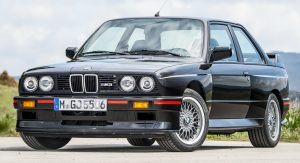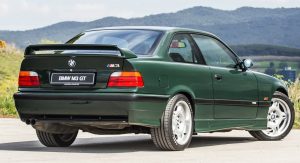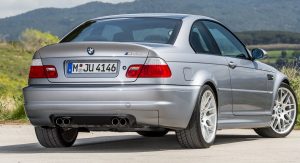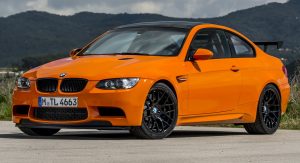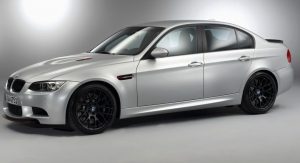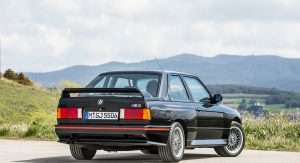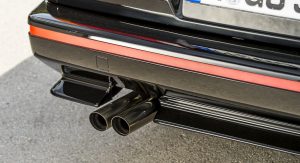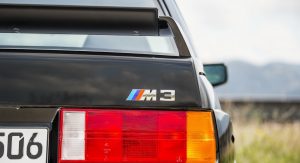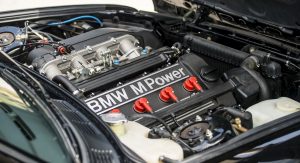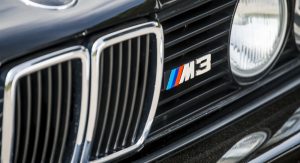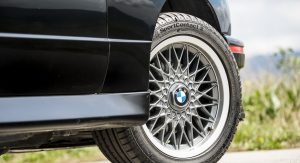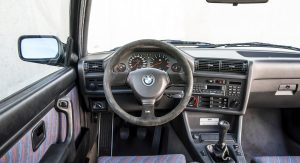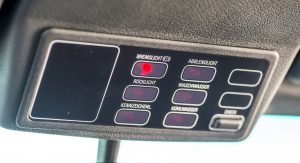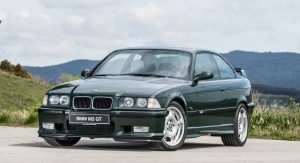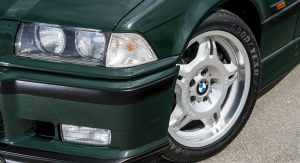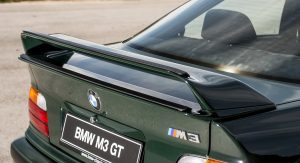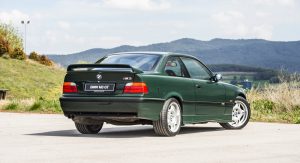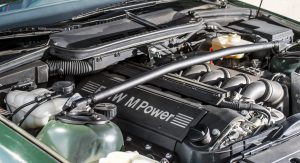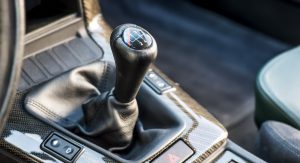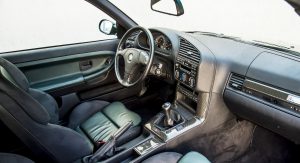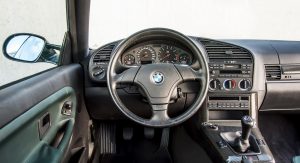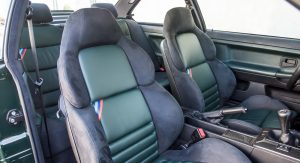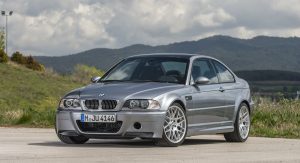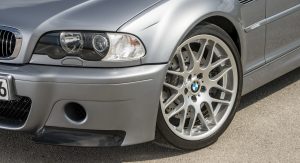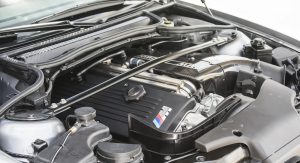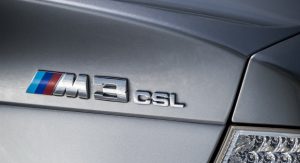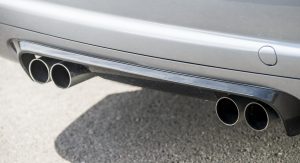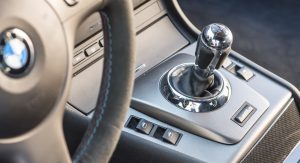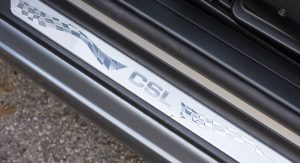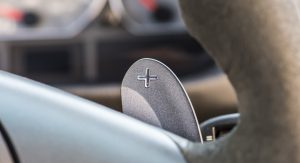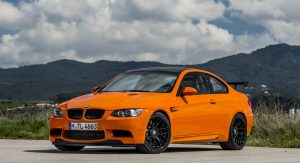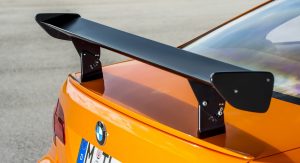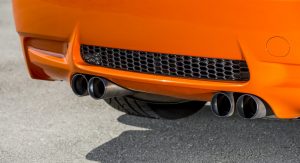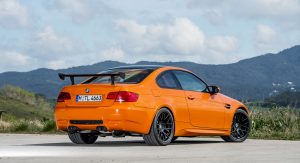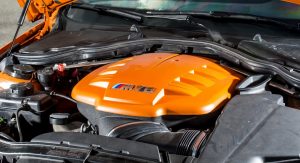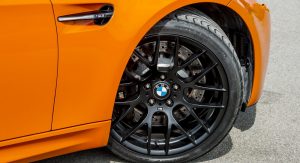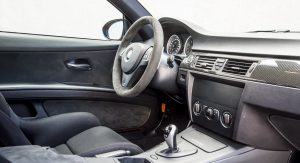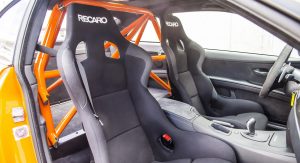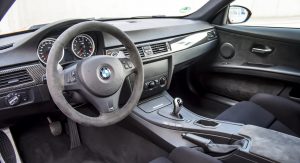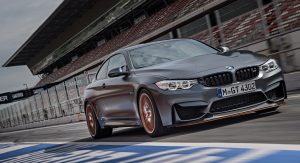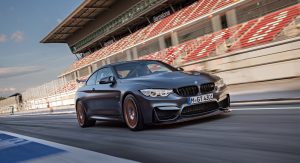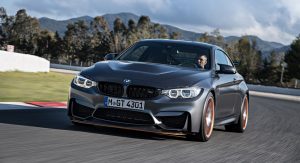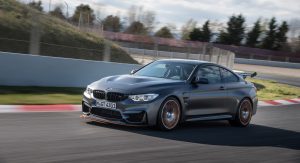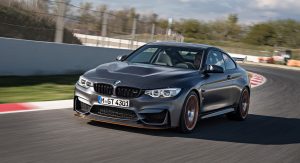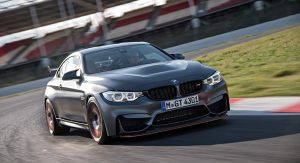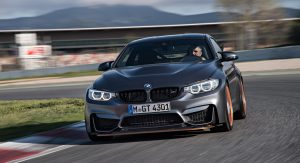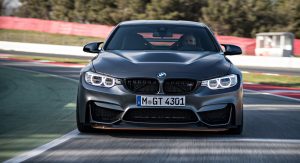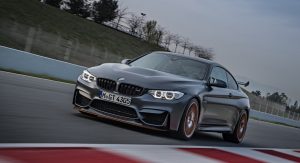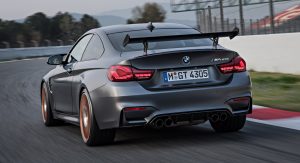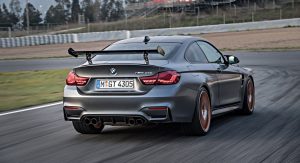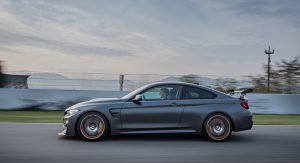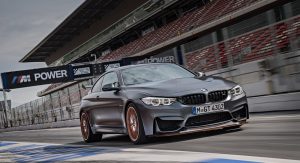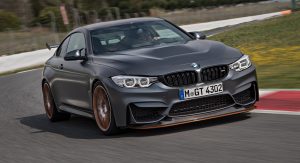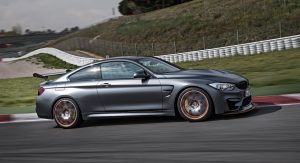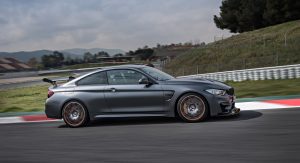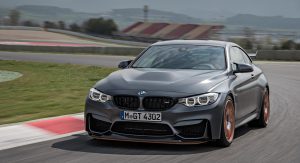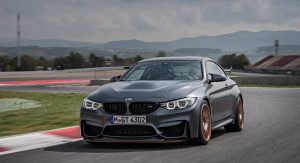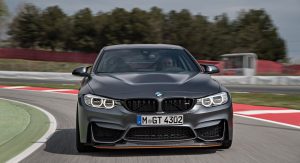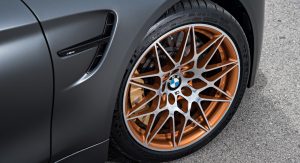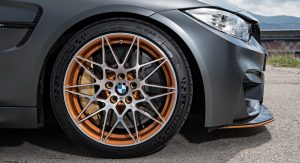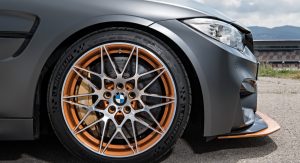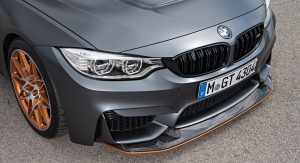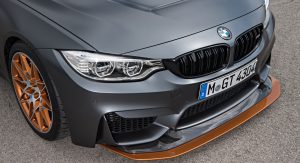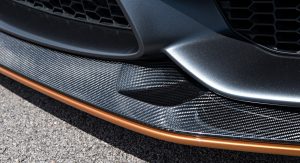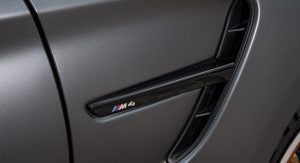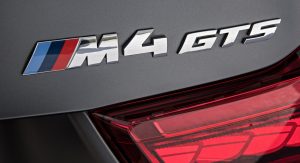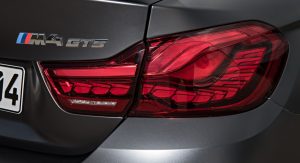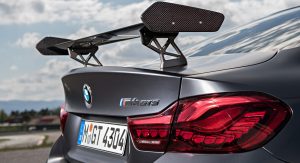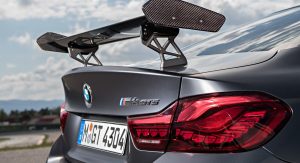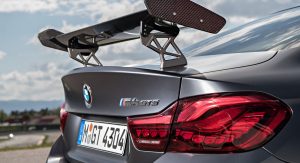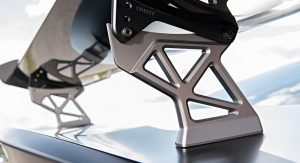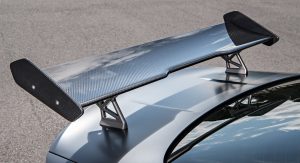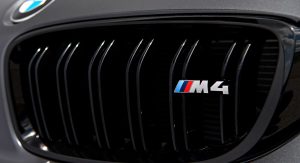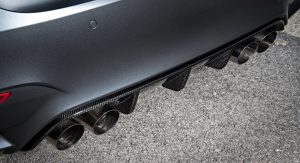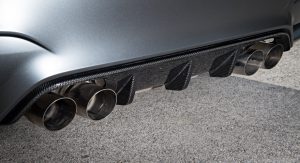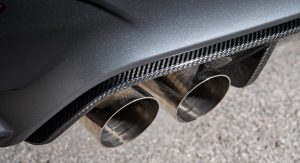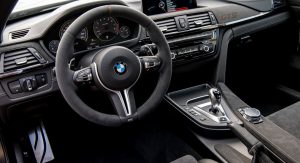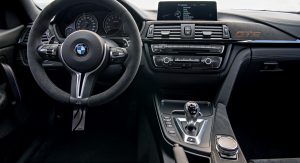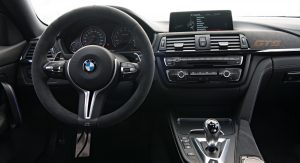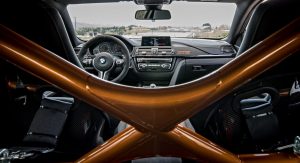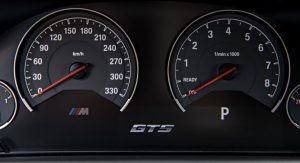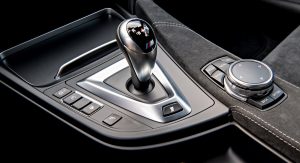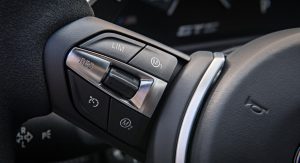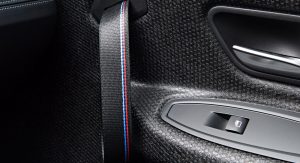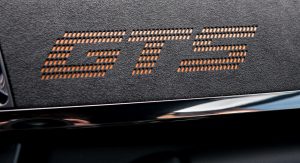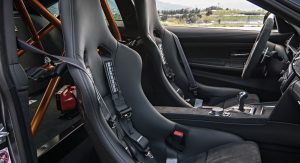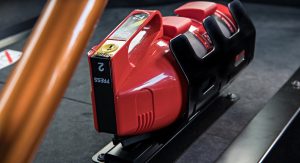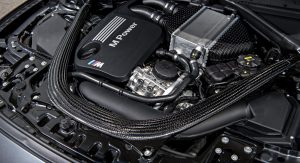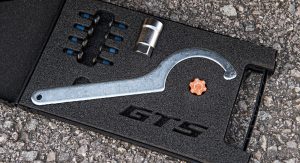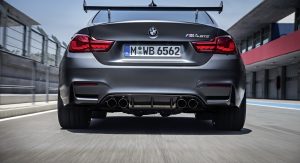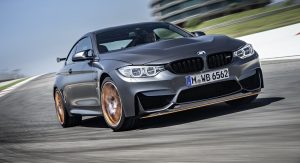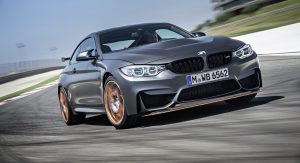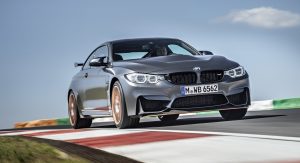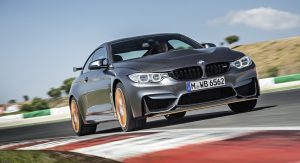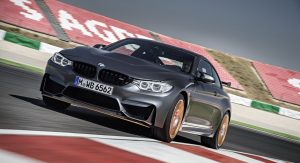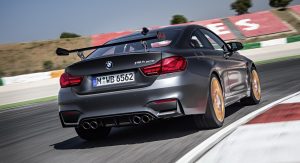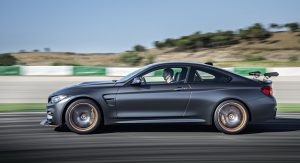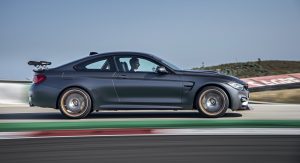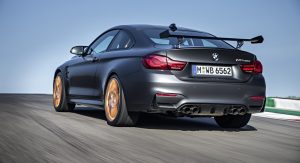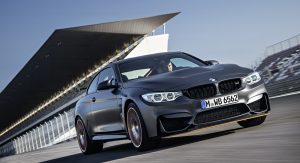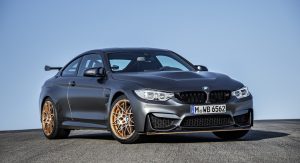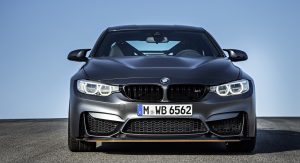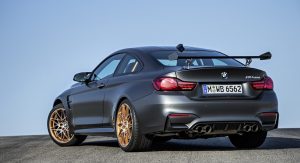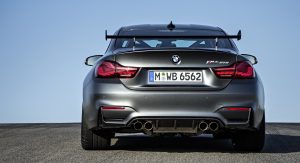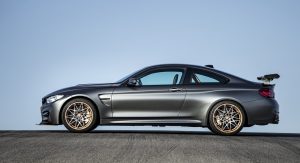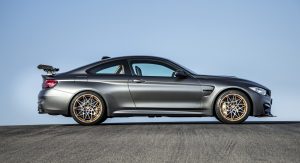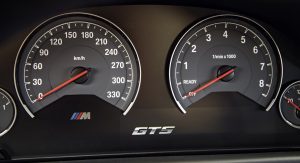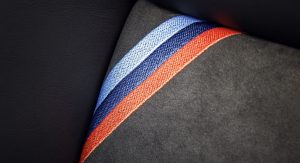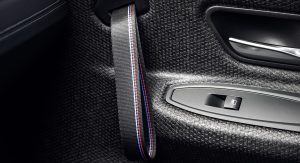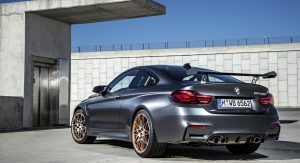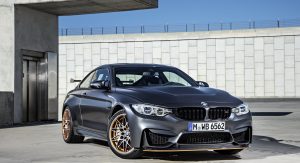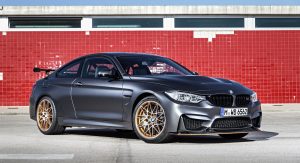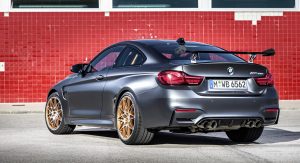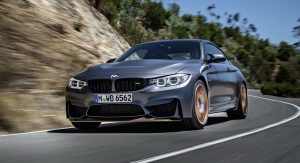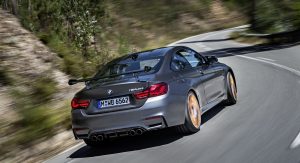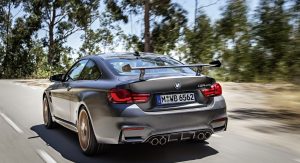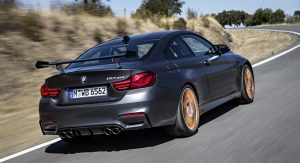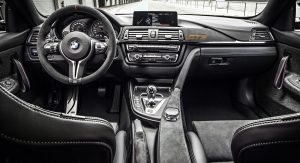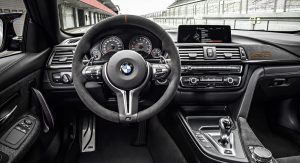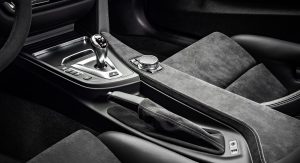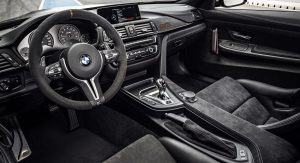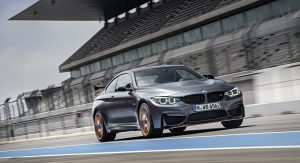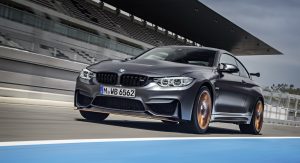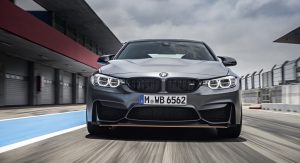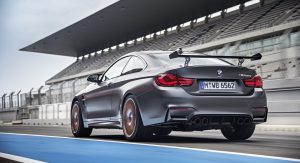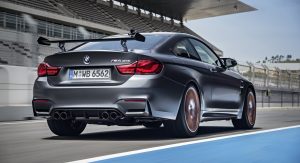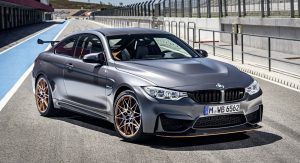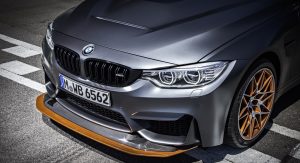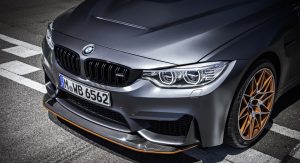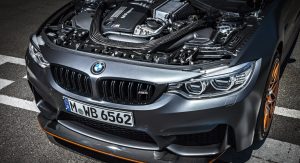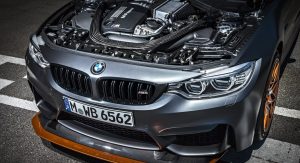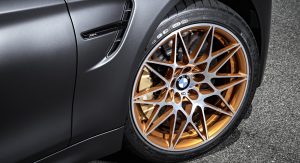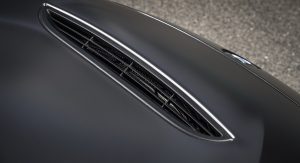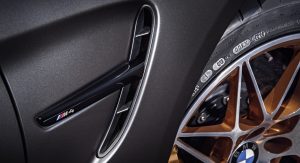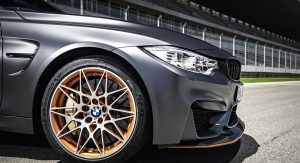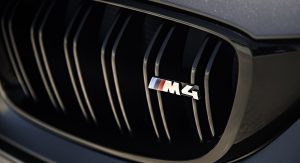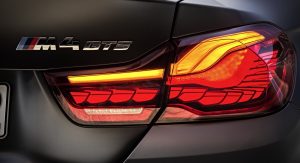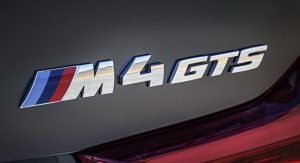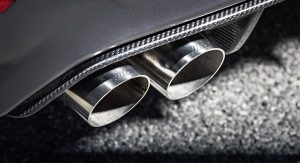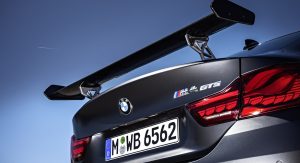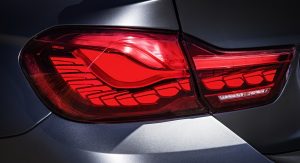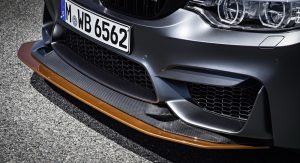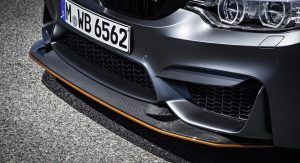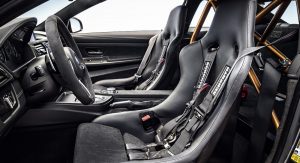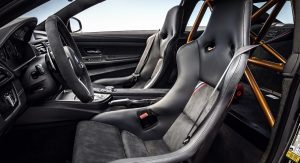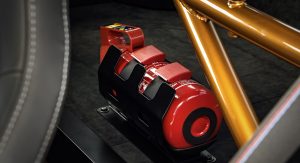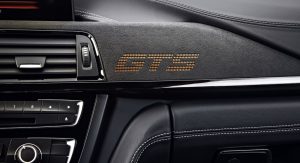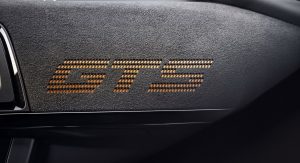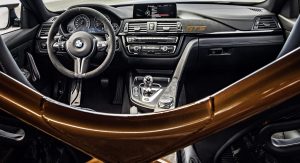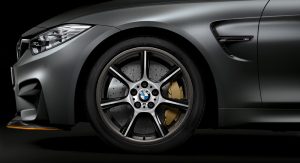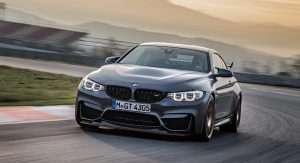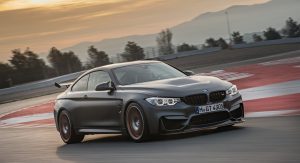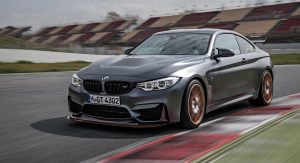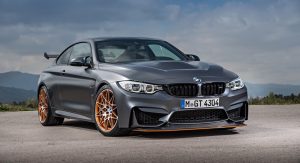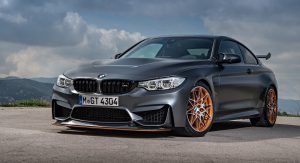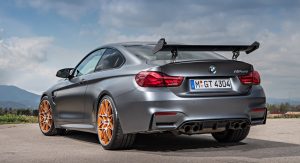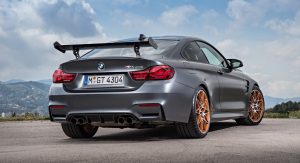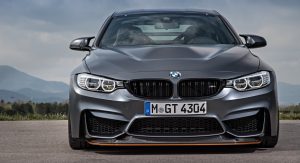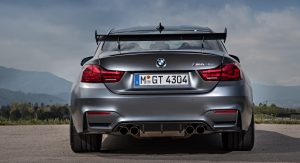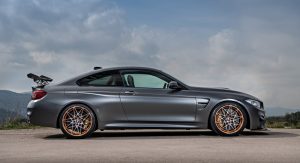When the ‘M’ badge doesn’t quite cut it for demanding enthusiasts, BMW’s performance division rolls out track-focused specials like the new M4 GTS, which builds on a long line of predecessors dating back to the 1980s M3 E30.
Every single M3, and now, the M4, has had at least one of these special street-legal models in its ranks, with the common denominator being increased levels of power, reduced weight, tweaked chassis components, and improved aerodynamics.
“Special-edition models like the BMW M3 GT, BMW M3 CSL, BMW M3 GTS and BMW M3 CRT have a decades-long tradition in our mid-size line-up – and that continues with the BMW M4,” says BMW M boss, Frank van Meel. “They sharpen the character of the BMW M brand and embody an emotionally rich and exclusive driving experience.”
You can read the official timeline along with details of the M3 specials, from the 1988 E30 Evolution to the 2011 E90 CRT below, for the new M4 GTS, BMW will keep production limited to just 700 units worldwide, with approximately 300 of those earmarked for US customers with deliveries starting in the second quarter of 2016.
The GTS adds a special water injection system to the stock M4’s 3.0-liter twin-turbo straight-six helping boost output to 493hp (500PS) and 600 Nm (442 lb-ft). It’s also 80kg or 176 pounds lighter than the standard 425hp (431PS) M4. Offered only with a 7-speed M double-clutch transmission, it races from a standstill to 100 km/h (62 mph) in 3.8 seconds and hits a limited top speed of 305 km/h (190 mph), but it’s biggest achievement –on paper- is that it’s BMW’s quickest production car ever on the ‘Ring with a lap time of 7:28, almost 30 seconds faster than the standard M4.
The history of BMW M3 special editions
1988: BMW M3 Evolution (E30)In 1988, BMW M GmbH brought the BMW M3 Evolution onto the market in a limited-run special series of 500 units. Its four-cylinder in-line engine with 2.3-liter displacement now developed 220 hp – 25 hp more than the standard M3. The increase in power was the result of a series of modifications to components that included the valves, pistons, cylinder head and camshaft. Weight reduction measures included body and thinner window glass. The BMW M3 Evolution had a more pronounced front spoiler than the standard M3 and a larger, adjustable rear spoiler.
1990: BMW M3 Sport Evolution (E30)
The development of the M3 E30 reached its highest mark in 1990 with the arrival of the BMW M3 Sport Evolution, available only in Gloss Black or Brilliant Red. The new arrival developed up to 238 hp from its four-cylinder in-line engine, now with 2.5-liter displacement – up more than 22 percent compared with the standard BMW M3 at the time. The intelligent lightweight construction of components including the front wings, muffler, front spoiler, trunk lid and rear wing brought the curb weight down by around 77 pounds. The adjustable splitter on the front spoiler and 16-inch light-alloy wheels with Nogaro Silver star in the center of the rim were among the most distinctive external features of the BMW M3 Sport Evolution. Inside, the front bucket seats with integral head restraints, red seat belts and suede leather covers for the sports steering wheel, handbrake lever and gearshift lever knob underlined the car’s sporting prowess. Another key mark of this M3 version – of which only 600 were produced – was the “Sport Evolution 1990” badge on the center console.
1995: BMW M3 GT (E36)
The second generation of the BMW M3 saw a 6-cylinder inline engine take over as the sports car’s power source. With capacity of 2,990cc, four-valve technology and VANOS camshaft timing on the intake side, the engine generated a formidable 286 hp and enabled acceleration form 0 to 100 km/h (62mph) in 5.9 seconds. In 1995, BMW M GmbH launched the BMW M3 GT special-edition model in a run of just 350 units. Output was boosted to 295 hp and the engine previewed some of the technical details of the upcoming 3.2-liter unit. The car’s doors were made from aluminium and the interior was decked out in Mexico Green Nappa leather. As for exterior paint shades, the special edition was available in British Racing Green or Silver only.
BMW returned to the idea of a limited-run special-edition BMW M3 in mid-2003, this time using the E46 model generation as the donor car. The CSL affix was a reference to the legendary BMW 3.0 CSL (for “Coupe Sport Leichtbau”) of the early 1970s. In keeping with this moniker, denoting lightweight design, the BMW M3 CSL introduced a series of weight-saving parts to the mix. The center console, interior door trim and rear-view mirror were made from carbon-fiber-reinforced plastic (CFRP), the rear window featured thinner glass, the trunk lid with integral spoiler lip was now lighter and weight had also been cut from the trunk trim. All in all, the judicious use of lightweight parts allowed the car’s curb weight to be reduced by 362 pounds to 3,053 pounds.
The power produced by the 3,246cc 6-cylinder inline engine, was increased to 360 hp. Modification of the intake air ducting was necessary to cool the upgraded engine, which led to the creation of a distinctive circular aperture in the aerodynamically optimized front apron to enhance the supply of air to the airbox. Externally, the BMW M3 CSL stood apart from the BMW M3 with its exposed carbon-fiber roof and special “Sport” 19-inch M light-alloy wheels with Michelin Sport Cup tires.
On opening the door, the two bucket seats and lightweight rear seats in an Amaretta/cloth combination immediately caught the eye. The doors came with carbon-fiber inserts, the M sports steering wheel had a grippy Alcantara covering and the center console was now of a more compact and lightweight construction. Another distinctive feature of the steering wheel was the “M” button used to activate M Track Mode. This adapted the responses of the power steering and the parameters of Dynamic Stability Control (DSC) to allow an even sportier driving style. The modified Launch Control system helped the BMW M3 CSL to race from 0 to 100 km/h (62 mph) in just 4.8 seconds and hit the 200 km/h (124 mph) mark in a mere 16.7 seconds. The CSL chassis brought magnetic pulse-formed rear control arms and some of the tuning work took place at the Nürburgring-Nordschleife. The result of these modifications could be seen in independent tests. Indeed, the BMW M3 CSL set what was then the fastest lap of the Nordschleife for its output class (7 min 50 sec).
2010: BMW M3 GTS (E92)
In 2010, BMW M GmbH introduced the direct successor to the BMW M3 CSL in the form of the BMW M3 GTS. Like its predecessor, it was designed to deliver the highest dynamic performance. Lightweight construction once again played a central role, reducing the car’s DIN curb weight to 3,373 pounds – 275 pounds lower than that of the standard BMW M3. An increase in the cylinder stroke pushed the displacement of the V8 engine from 4.0 up to 4.4 liters, boosting output by 30 hp to 450 hp.
The BMW M3 GTS came as standard with a bolted-on roll bar in place of a rear seat bench, and this could be optionally upgraded to a full roll cage. Furthermore, mounts for four- and six-point Schroth seatbelts were fitted. And finally, the fire extinguisher holder behind the front seats underlined the clear track focus of the GTS. The car’s racing ability was also enhanced by revised aerodynamics. A front spoiler with carbon-fiber splitter teamed up with the carbon-fiber rear wing on the trunk lid to reduce lift and ensure high cornering speeds.
BMW M GmbH produced the BMW M3 GTS largely by hand, with the cars built individually in the factory to customer specification. Type approval for road use in Germany was on a case-by-case basis.
2011: BMW M3 CRT (E92)
The BMW M3 CRT – produced in a run of just 67 units from May 2011 – combined the technology of the BMW M3 GTS with the body of the four-door BMW M3 Sedan. The CRT also had a carbon-fiber bonnet with apertures next to the powerdome and a splitter below the front apron, but the large rear spoiler on the trunk lid was usurped by a carbon-fiber spoiler lip. In place of a roll bar, the BMW M3 CRT came with a rear seat bench containing two molded individual seats. With a curb weight (DIN) of 3,483 pounds, the BMW M3 CRT was around 99 pounds lighter than the BMW M3 Sedan.





